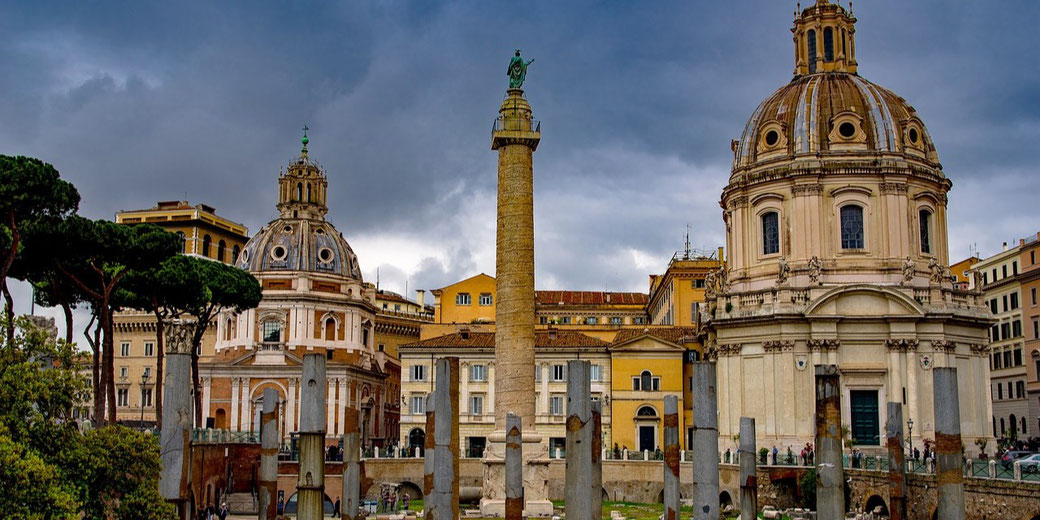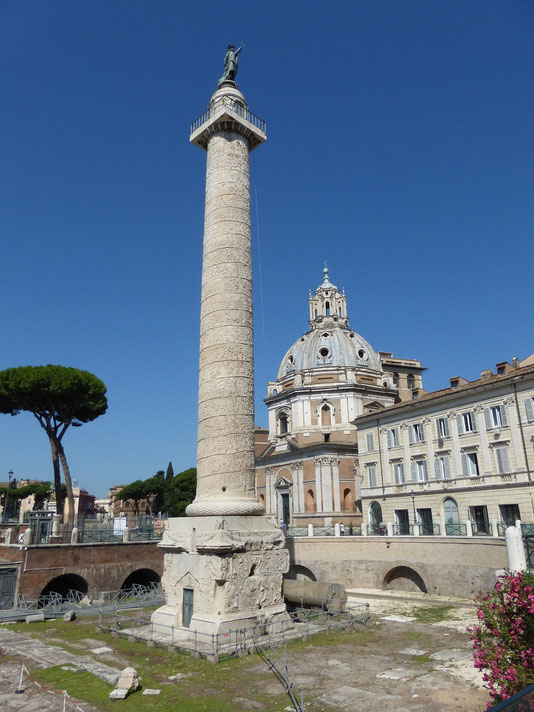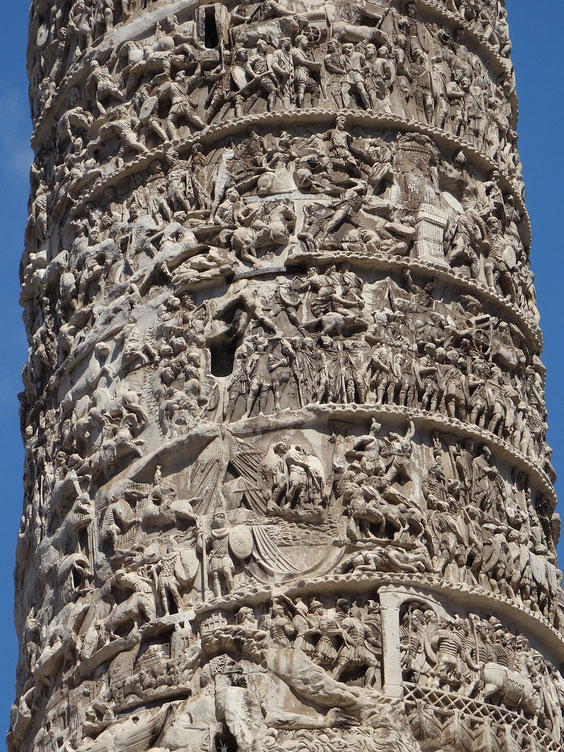Trajan's Column: the marble marvel of ancient Roman military propaganda

Trajan's Column, an awe-inspiring masterpiece that has stood the test of time, towers above Rome as a proud testament to the power and prowess of the Roman Empire.
Erected in 113 AD to celebrate the victories of Emperor Trajan in the Dacian Wars, this monumental work of art and architecture captures the essence of Rome's glory days.
With its intricate carvings winding their way up the column's exterior, it transports us back to an era of conquest and triumph, offering a vivid window into the life and legacy of one of Rome's greatest rulers.
What is Trajan's Column?
Trajan's Column is an ancient Roman monument located in the Forum of Trajan in Rome.
The column not only celebrates the military achievements of the Roman Empire but also serves as a propaganda tool, reinforcing Trajan's image as a great emperor.
An internal spiral staircase leads to the top of the column, which was originally crowned with a bronze statue of Trajan.
The statue has since been lost, and in the 16th century, Pope Sixtus V replaced it with a statue of St. Peter.

How was it built?
Designed by the architect Apollodorus of Damascus, the column is situated in the heart of Rome, within the Forum of Trajan, the largest and most elaborate of the Imperial fora.
The column stands at approximately 100 Roman feet (29.6 meters) in height, with a base measuring 125 Roman feet (37 meters) in diameter.
It is constructed from 18 cylindrical blocks of Carrara marble, each weighing roughly 40 tons.
The blocks were expertly carved and placed on top of each other, supported by an internal spiral staircase.
The column's exterior is adorned with a continuous, spiraling frieze that extends from the base to the top.
This intricate relief depicts the story of the Dacian Wars, with over 2,500 figures illustrating a range of scenes, including battle sequences, military encampments, and even Trajan himself addressing his troops.
Why did Trajan build it?
Trajan's Column was built to commemorate the victories of Emperor Trajan in the Dacian Wars and to celebrate his successful military campaigns.
The Dacian Wars were fought between the Roman Empire and the Dacians, a tribe from modern-day Romania, in two separate campaigns between 101-102 and 105-106 AD.
The column served several purposes: it was a grandiose monument to showcase the might and power of the Roman Empire, a visual narrative of Trajan's military achievements, and a form of propaganda to reinforce Trajan's image as a wise and just ruler who led his troops to victory.
By depicting scenes of the Dacian Wars on the spiraling frieze, the column provided a lasting record of these events for future generations and helped to solidify the emperor's legacy.
Additionally, the column was an integral part of the Forum of Trajan, the largest and most elaborate of the Imperial fora in ancient Rome. The forum was designed to glorify Trajan's reign and to serve as a political, social, and commercial center for the city.

The valuable information found in the scenes
The scenes depicted on the spiraling frieze of Trajan's Column offer valuable insights into various aspects of ancient Roman history, culture, and military life during Emperor Trajan's reign.
One of the key aspects that the frieze brings to life is the military campaigns of the Dacian Wars.
The visual narrative showcases important events such as battles, sieges, and the construction of fortifications.
These depictions help historians better understand Roman military strategies, tactics, and equipment used during the Dacian Wars, shedding light on how the Roman army functioned and fought during this period.
Additionally, the scenes on Trajan's Column offer glimpses into the daily life of Roman soldiers.
From setting up military camps and conducting religious ceremonies to interacting with local populations, these intricate carvings provide a detailed portrayal of the organization, discipline, and logistics that characterized the Roman army at the time.
These insights help us appreciate the lives and experiences of Roman soldiers who served in the Dacian campaigns.

Furthermore, the column's frieze illustrates various engineering and construction feats achieved by the Romans, such as building bridges, forts, and roads.
These depictions showcase the advanced technical skills and ingenuity of Roman engineers and architects, highlighting their ability to master complex construction projects and adapt to different terrains and environments.
The frieze also depicts interactions between Romans and Dacians, revealing elements of the two cultures and their social customs, clothing, and hairstyles.
This information helps historians and archaeologists gain a deeper understanding of the cultural dynamics between the two groups, uncovering the nuances of Roman and Dacian societies during this historical period.
Lastly, the column served as a form of propaganda to reinforce Trajan's image as a wise and just ruler who led his troops to victory.
By carefully studying the scenes and their composition, historians can analyze how the Roman Empire used public art to promote its political and military agenda, showcasing the importance of visual storytelling in shaping public perception and opinion.
What do you need help with?
Download ready-to-use digital learning resources
Copyright © History Skills 2014-2024.
Contact via email
With the exception of links to external sites, some historical sources and extracts from specific publications, all content on this website is copyrighted by History Skills. This content may not be copied, republished or redistributed without written permission from the website creator. Please use the Contact page to obtain relevant permission.





